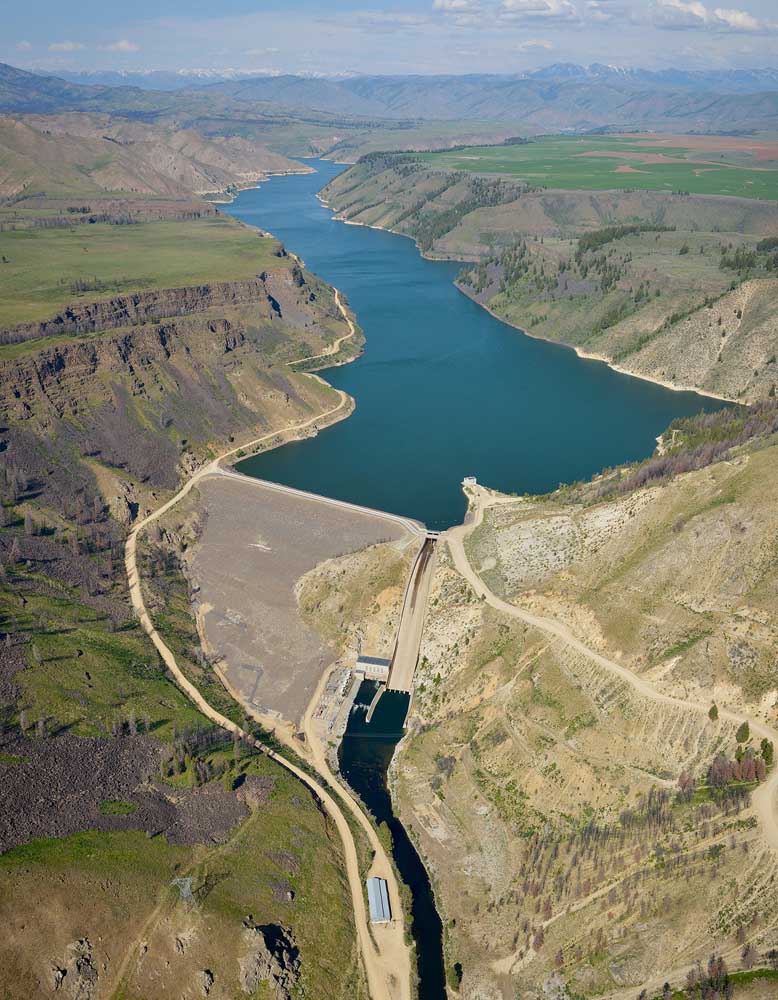Projected costs jump 50% for raising Anderson Ranch Dam
Published 4:00 pm Thursday, May 25, 2023

- The Anderson Ranch Dam in Idaho will be raised to increase its water storage capacity.
- Project detail
The projected cost of raising the Anderson Ranch Dam is substantially higher than estimated in a feasibility study three years ago, U.S. Bureau of Reclamation officials told the Idaho Water Resource Board.
The jump from about $83 million to $124.8 million reflects higher costs for construction materials and labor and more detail as design work progresses, Reclamation officials said.
Reclamation and the board are partnering on the project to raise the 456-foot dam, on the South Fork Boise River northeast of Mountain Home, by 6 feet. The reservoir capacity, currently 413,000 acre-feet, would increase by about 29,000. A review under the National Environmental Policy Act continues.
The board will cover 89% of the project’s cost, and Reclamation will pay the rest.
Reclamation provided the updated cost estimate at the 30% design stage — which includes a more refined design of the dam raise, spillway modification and more than 18 mitigation projects around the reservoir rim to accommodate the higher water surface elevation, according to a board news release.
From the earlier estimate, construction cost increased from about $44 million to $65 million while the cost of reservoir rim projects increased from $12 million to $39 million, Lanie Paquin, who manages Reclamation’s Snake River Area Office in Boise, told the board. The team in subsequent design activities will focus on opportunities to reduce costs. They could be identified in a “value-engineering study” and a “constructability” review, both key in major projects, project manager Chris Keith of Reclamation told Capital Press.
A currently preferred plan is to build a spillway overlay, rather than removing and replacing the spillway, to leave more water in the reservoir during construction and potentially speed up construction, Reclamation officials said earlier.
During construction, the potential restriction on the reservoir pool elevation is expected to be lower than the feasibility study expected, which should reduce potential impacts on water users, Paquin said.
The updated estimate also includes about $20 million in non-contract costs including engineering, project management, field exploration and design.
The final design is expected in the late summer of 2024, Keith said. Construction work is expected to start in late 2025 or early 2026 and conclude in 2029.
The higher cost estimate does not impact the schedule but means the water board will have to commit more money to the project eventually, said Brian Patton, executive officer for the board.
The board has paid $74.1 million — its expected contribution based on the original estimate of $83 million — to Reclamation.
As for the cost increase, “given cost escalation in infrastructure projects over the last few years, that is not unexpected,” Patton said.
The legislature in 2022 allocated $250 million in American Rescue Plan Act funds to the board for the dam and other projects over four years. The legislature in recent years has also directed some of its state budget surplus to the board.
“I think it’s the board’s intent to cover this project with ARPA monies,” Patton said. The board continues to evaluate projects and funding sources.






